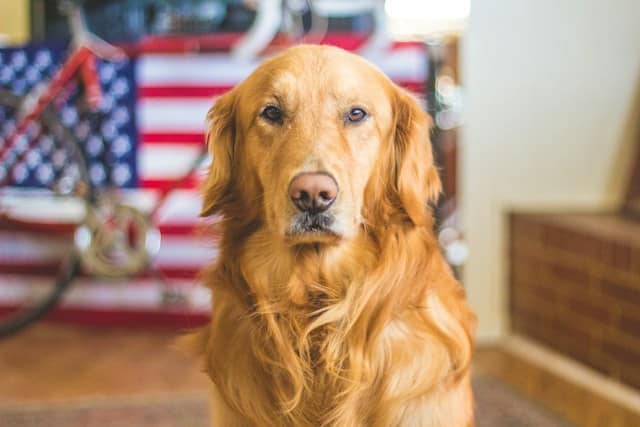How Can You Effectively Train a Dog for Competitive Obedience?

Are you the proud owner of a furry four-legged friend? If so, you’re likely aware that training your pet is crucial for maintaining harmonious cohabitation. But, have you ever considered taking it a step further? We’re talking about competitive obedience, a discipline where dogs can truly shine with their innate skills and sharp minds. The American Kennel Club (AKC) recognizes this sport, and it could be your pet’s time to excel. Let’s dive into the process of how you can effectively train your dog for competitive obedience.
Understanding the Importance of Obedience Training
Before you can start tuning your dog into a competitive obedience superstar, it’s essential to understand the importance of basic obedience training. Now, you might be wondering, what makes obedience training so crucial?
En parallèle : How to Identify Nutritional Deficiencies in Pet Lizards?
Cela peut vous intéresser : How to Identify Nutritional Deficiencies in Pet Lizards?
Training your dog is about more than just teaching them to sit or stay. It’s about fostering a strong bond between you and your pet, ensuring they have a good understanding of what’s expected of them, and helping them learn how to behave in different situations. In essence, it’s the foundation that allows you to build more complex training routines later on.
A lire aussi : How to Help a Dog Overcome Fear of Water?
Start by teaching your puppy the basic commands, such as sit, stay, and come. Use treats and positive reinforcement to reward good behavior and make the learning process fun for your dog. Keep in mind that patience is key. Some dogs may take longer than others to learn certain commands, but with time and persistence, they’ll eventually get there.
A lire aussi : What’s the Best Way to Socialize a New Kitten with Older Cats?
Choosing the Right Training Class
Finding the right training class for your dog is just as important as the training itself. AKC offers a range of classes specifically designed for obedience training, from beginner levels to more advanced ones.
When selecting a class, consider the skills and experience of the trainer. Look for classes with trainers who have experience with competitive obedience training. It’s also important to take into consideration your dog’s temperament and the class size. A smaller class size is ideal as it allows for more individual attention from the trainer.
The training class should focus on positive reinforcement methods and provide a balanced curriculum that covers both basic obedience skills and the more specialized skills needed for competitive obedience.
Starting Your Dog’s Competitive Obedience Training
Once your dog has mastered the basics, it’s time to start training for competitive obedience. At this point, your dog will need to learn more advanced commands and tasks, such as heeling, retrieving, and responding to signals.
It is important to train your dog regularly and consistently. Make sure your dog has mastered each command before moving onto the next one. Use treats and positive reinforcement to motivate your dog and make the training process enjoyable for them.
Remember, every dog learns at their own pace, so don’t rush the process. The goal is to help your dog learn and understand the commands, not just to rush through them.
Preparing for the Competition
The preparation for the competition goes beyond the training classes. You should also make sure your dog is physically fit and healthy. Regular check-ups with your vet will help ensure your dog is in the best shape possible.
It can also be beneficial to attend a few competitions as a spectator before you enter your dog. This will give you a better idea of what to expect and will help you prepare your dog for the sights, sounds, and distractions they might encounter in a competition environment.
During the competition, remember that it’s not just about winning. The most important thing is that you and your dog are enjoying the process. After all, the journey of training is just as rewarding as the competition itself.
Utilizing Ongoing Training and Socialization
Even after your dog has started competing, ongoing training and socialization remain essential. Regularly practicing the commands and skills learned can help ensure that your dog retains them.
Ongoing socialization can also be beneficial. Exposing your dog to different situations, environments, and people can help improve their confidence and adaptability, which are vital traits for a competitive obedience dog.
Remember, the most important thing in the end is that your dog is happy and enjoying the training process. Competitive obedience can be an excellent way for you and your dog to bond, spend quality time together, and have fun.
So, with patience, persistence, and the right approach, your dog may just become the next AKC obedience star.
Building a Training Schedule and Maintaining Consistency
Now that you have a grasp of the primary components of competitive obedience training, the next step is to create a detailed and structured training schedule for your dog. This will assist in maintaining consistency in your dog’s training routine, which is an essential aspect of obedience training.
Whether you’re engaging in daily training sessions or weekly classes, consistency is critical. Dogs thrive on routine, and regular training helps reinforce the behaviors and commands that your dog has learned. To maintain consistency, it’s vital to establish a regular training schedule. This schedule should ideally include daily training sessions that focus on reinforcing the commands your dog has already mastered, as well as introducing new ones.
Consider your dog’s daily routine and find a suitable time for training when your dog is alert, energetic, and ready to engage. Typically, this might be before meals or after a rest period. Training sessions should be short, around 15 to 20 minutes, to avoid tiring your dog out. It is also important to keep the training environment as consistent as possible. Try to avoid distractions and ensure the training area is familiar and comfortable for your dog.
During training, use positive reinforcement strategies to encourage and reward your dog. This can take the form of treats, praise, or toys, depending on what motivates your dog most effectively. Always end training sessions on a positive note to keep your dog motivated and looking forward to the next session.
Advanced Training Techniques for Competitive Obedience
As you progress in your dog’s training, there are some advanced techniques you can employ that will help take your dog’s abilities to the next level. Many of these techniques are commonly used in dog sports and are particularly effective for competitive obedience.
One such technique is "proofing". Proofing refers to teaching your dog to follow commands no matter what distractions are present. To proof your dog, gradually introduce distractions during training sessions and practice commands. Start with minor distractions, such as a toy or food, and gradually increase the level of distraction as your dog becomes more proficient.
Another advanced technique is "shaping". This involves rewarding your dog for progressively closer approximations to the desired behaviour. For example, if you are teaching your dog to retrieve an object, you might first reward them for looking at the object, then for moving towards it, and finally for picking it up.
Taking advantage of these methods will help your dog develop the advanced skills necessary for competitive obedience. Remember, patience and persistence are vital when implementing these techniques. Your commitment to your dog’s training will be rewarded tenfold when you see their skills shine in the competitive obedience ring.
Conclusion
Training your dog for competitive obedience can be an enriching and rewarding experience. It enables a deep bond to form between you and your pet while teaching your dog important obedience skills. This journey requires patience, dedication, and the right training approach.
Using positive reinforcement, establishing a consistent training schedule, and incorporating advanced training techniques can significantly aid your dog’s training process.
Ensuring your dog is physically fit and mentally prepared for the competitive environment is equally crucial, along with ongoing training and socialization even after the competition.
Remember, every dog learns at their own pace, and the ultimate goal is to ensure that your dog enjoys the process. With the right attitude and approach, your dog may soon be the next star of the American Kennel Club’s obedience competitions.
